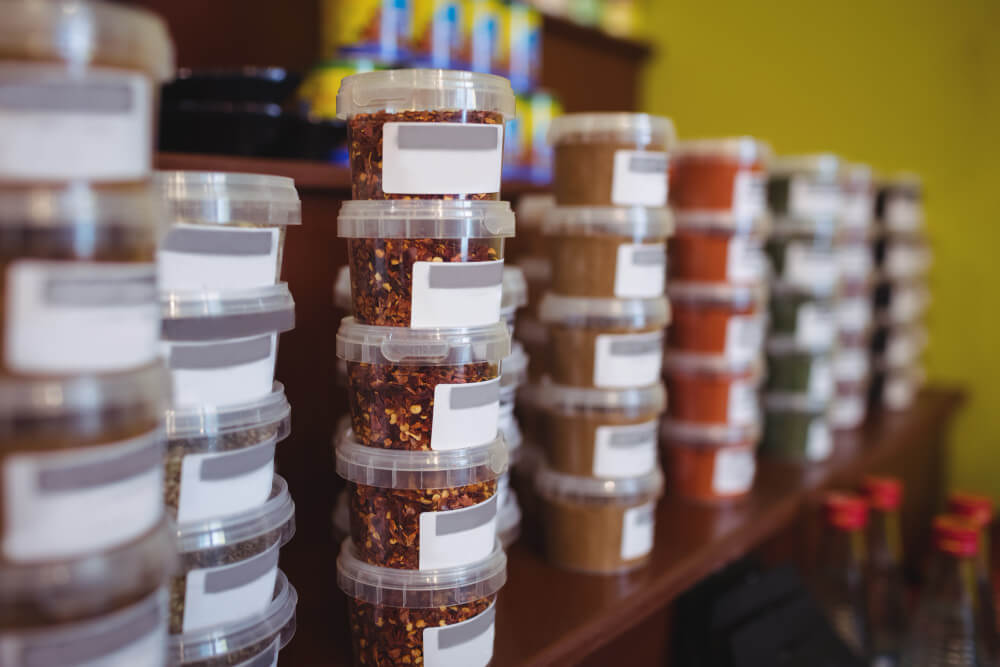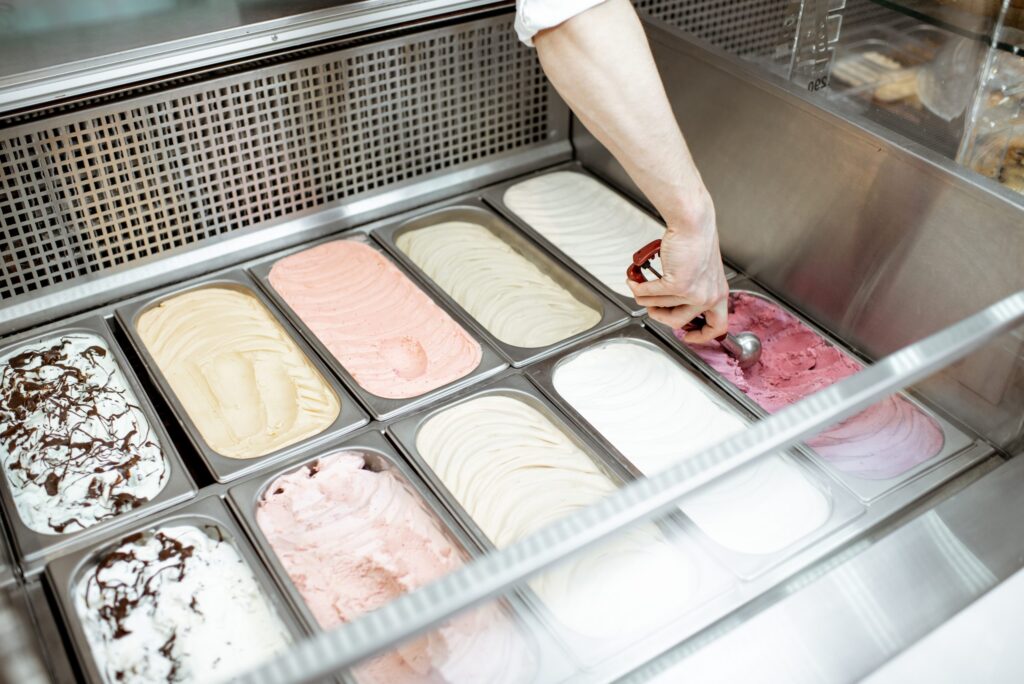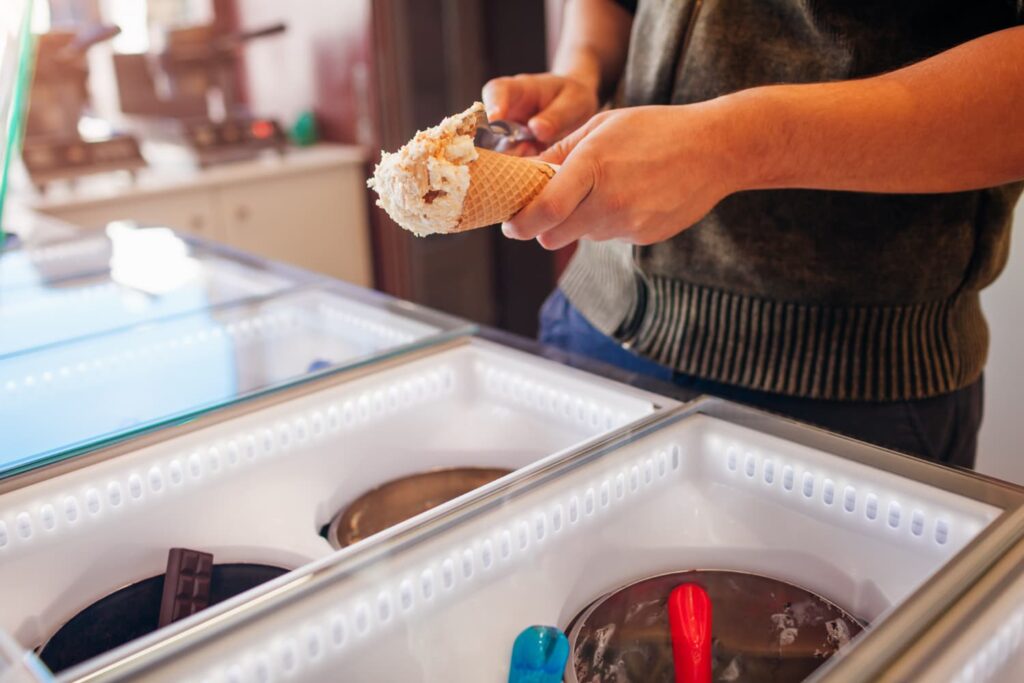Here, we explain why you should always implement a food colour coding system and how this can be done simply and effectively.
Why do we use colour coding labels on food containers?
The primary reason to use food colour coding is to ensure that strict hygiene standards demanded by both the law and the customer are adhered to.
A modern, commercial kitchen needs to be well run and organised. If it isn’t, there is a real risk that customers come away from an establishment with food poisoning and that is a no-no on so many levels – not least the fact you don’t want to make someone seriously ill because of your negligence.
But there are other reasons too.
Colour coding is important as it:
- Signposts the level of organisation in your kitchen
- Saves time by eliminating unnecessary guesswork
- Simplifies inventory management
- Ensures that food is served to customers in the best condition
Why use colour coded labels on food containers in a kitchen?
What colour coding labels on food containers does is to ensure that products which are more likely to harbour harmful bacteria do not come into contact with other foods.
For example, you don’t want something like cooked chicken to be placed in the fridge on Wednesday, then more chicken added to the container on the Friday.
Colour coding will ensure that by Friday the cooked chicken will most definitely have been disposed of, otherwise there will be a serious risk of contamination.
In a nutshell, having a colour coding system for food containers is a very simple and cheap way to ensure the minimum health and safety standards of your kitchen are adhered to and that all efforts have been made to follow the Hazard Analysis and Critical Control Point (HACCP) principles used to assess food safety.
Without colour coding food containers, it’s unlikely that you will achieve a good food hygiene rating which is another very good reason to put an effective system in place.
How to use colour coding labels on food containers
There are many ways you can use colour coding labels on food containers in a professional kitchen, but the simplest way is to have a different colour to represent a different day of the week.
In this way, you can see at a glance which foodstuffs have been stored longest and therefore which need to be used up straight away. This will ensure that the produce you use is fresh and in optimum condition.
How to colour code your containers
You might want to consider In Mould Labelling (IML) for certain containers.
IML labels are high quality pre-printed polypropylene labels designed with imagery and colours you need. The labels are fused to the container used for storage.
Colours used to identify certain products include:
White – this is used for bakery items such as bread and pastries as well as cheese and dairy.
Yellow – indicates the container holds cooked meats. These should be kept separately from raw meat as once cooked the bacteria is removed.
Red – will signpost raw meat which is a major source of bacteria and therefore should not be placed against any other kinds of foodstuffs.
Blue – is the colour for raw fish, a common allergen which needs to be kept separate from other foodstuffs. You should not store raw meat and fish together; although both are animal products, they need to be apart from each other.
Green – is for fruit and vegetables.
The implementation of a clear colour coding system is a reliable way of maintaining a high standard of food safety.
Staff should be furnished with a list of all the colour codes so that they all understand what they mean at a glance.
Why do we use colour coding labels on food containers?
To prevent cross contamination
Colour coding is the one simple thing you can do in any kitchen to prevent cross contamination between different food types.
For example, you don’t want raw meat to contaminate a cooked pie, or raw chicken to be in close proximity of cheese and you certainly need to keep allergens separately from everything else.
Colour coding labels on food containers are a great way to ensure that things that cause food poisoning such as raw meat, raw fish, cooked meat, vegetables, bread, and dairy products remain separate from each other when they are in storage.
Ensure a good food hygiene rating
Aside from the very real health issues, if you don’t use colour coding, on the very basic level it will affect your food hygiene rating and if you receive a low star or no star rating that will almost certainly affect your business.
Quickly assess shelf life
Labelling is key as it will ensure that spoiled food is not used and that it is easy to see what kind of food is in a container. This allows staff to quickly assess how much shelf-life produce has left, and when to throw it away.
Quickly identify foods
Utilising colour coded labels helps with the rapid identification of foods that can be used or that need to be thrown away. A quick glance at the colour tells you at what stage the foodstuff is at.
Ensure allergens are identified
Food allergy labels make it clear if there are any potential allergens present, such as gluten, crustaceans, peanuts and more.
Food storage solutions from Venturepak
As you can see, colour coding labels are important.
At the very least, they will save you time, and at most they’ll stop you from giving someone food poisoning or an allergic reaction. Endangering someone’s life is something we are sure no food provider ever wants to happen.
At Venturepak, we’re industry leaders supplying plastic packaging in the form of moulded tubs.
We can provide you, or your business, with anything from ice cream containers to meal prep containers.
We also have extensive knowledge in health and safety regarding food contamination and hygiene.
If you’ve any questions about why we use colour coding labels, or any other enquiries about food containers, then do not hesitate to contact us and see how we can help you today!


